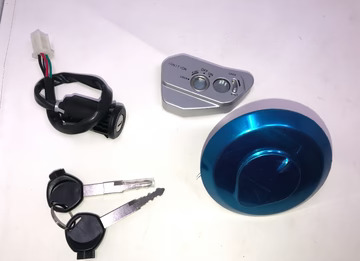"Time heals all wounds" is a phrase we often hear when we’re going through tough moments. But what if it isn’t entirely true? Imagine someone who spent years in talk therapy only to feel stuck, and then attended a weekend retreat that sparked a profound shift in their emotional world. Sometimes, it’s not about how long you've been healing, but what kind of healing you've accessed. For instance, psilocybin therapy has emerged as a powerful tool that can catalyze deep emotional breakthroughs in a short span of time. Healing doesn’t have to be slow, and it doesn’t have to be linear.
This article explores a powerful and empowering truth: while time can help, the right experience can transform your healing journey far more quickly than you might expect.
The belief that healing takes years is deeply ingrained in our culture. From books to therapy sessions, we often hear that pain, trauma, and grief can only be resolved over a long period. While there’s no doubt that healing is a process, relying solely on the passage of time can create a passive, even hopeless, mindset.
Traditional talk therapy can be incredibly valuable, but some people find themselves plateauing. Waiting for change without addressing the core of the pain, the body, or the nervous system can lead to frustration. Time is a factor in healing, but it's not the only one—nor the most important.
So if time isn’t the key, what is? Research and lived experiences point to three powerful factors:
Emotional Safety and Connection: Healing often begins when we feel truly seen and safe. Whether with a therapist, a group, or a facilitator, this kind of connection allows buried emotions to surface and be processed.
Breakthrough Experiences: Retreats, somatic therapy, psychedelic-assisted therapy, and spiritual awakenings have the potential to unlock years of healing in a matter of days. These experiences tap into the emotional and physiological layers of trauma and support meaningful release.
Nervous System Regulation and Neuroplasticity: Modern neuroscience shows that our brains are changeable. Practices like EMDR, Internal Family Systems (IFS), and breathwork can help rewire neural pathways, calming the nervous system and creating new emotional patterns.
A transformative healing experience isn’t random. It usually includes specific elements that create a container for deep change:
Safe, Supportive Environment: Safety is foundational. Healing can only happen when your system isn’t in fight-or-flight mode. Retreats or sessions that prioritize emotional and physical safety tend to be the most effective.
Skilled Guidance: Whether it’s a trauma-informed coach or a licensed therapist, having a knowledgeable guide helps you navigate intense emotions and understand what’s coming up.
Emotional Release + Cognitive Integration: Healing isn’t just about catharsis. You need both emotional release (crying, shaking, expressing) and a way to make sense of the experience afterward. Integration is what transforms insight into lasting change.
Common modalities that provide these elements include:
Inner child work
Somatic experiencing
Breathwork
EMDR
IFS therapy
Consider Jane, who struggled with anxiety for over a decade. Weekly therapy helped manage her symptoms, but real change came after she attended a somatic healing workshop. In two days, she uncovered childhood patterns, released pent-up grief, and came away feeling emotionally lighter than she had in years.
Or Alex, who carried trauma from a past relationship. One guided MDMA-assisted therapy session (within a legal, clinical setting) allowed him to revisit painful memories with compassion and reframe his sense of self.
What made these experiences effective?
Readiness: They were both open and committed to the process.
Support: Each had the right facilitator and emotional safety net.
Integration: They didn’t just have a breakthrough, they had a plan for what came after.
Skepticism is natural. Fast results often make us suspicious. Isn’t deep healing supposed to take time?
Not necessarily. There’s a difference between emotional bypassing (avoiding pain through spiritual or self-help distractions) and accelerated healing (consciously moving through pain in a supportive space). When done with awareness and integration, quick shifts are not only possible, they’re sustainable.
Integration is the key. A powerful experience without reflection and action can fade. But with the right post-experience practices (journaling, coaching, follow-up therapy), healing can anchor deeply.
If you’re curious about stepping into a transformational healing journey, here are steps to guide you:
Clarify Your Goals: Are you seeking emotional release? Inner clarity? Trauma resolution? Know what you want to heal.
Ask Smart Questions: What is the facilitator’s training? What does the process involve? Is there an integration plan?
Trust Your Intuition and Do Your Research: If something feels off, it probably is. Look for reviews, testimonials, or speak with past participants.
You don’t need to wait another year to feel better. You just need to find the experience that matches where you are and what you’re ready for.
Healing is not just about the passage of time. It’s about what you do with your time, and more importantly, the experiences you invite into your life.
The right experience, with the right support, can unlock a level of healing that might otherwise take years. Don’t let the myth of slow healing hold you back. Deep, rapid transformation is possible when you create the conditions for it. For many, modalities like psilocybin therapy have become the catalyst for that shift.
Reflect on your journey. What kind of healing experience might be calling you next?




Want to add a comment?